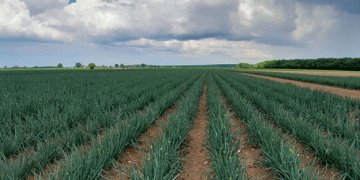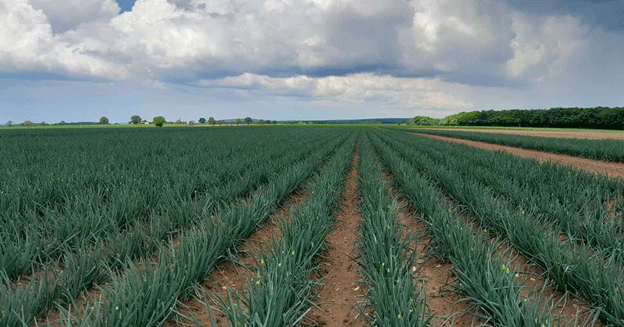Seed onion cultivation stands out as one of the most specialized yet labor-intensive agricultural practices. Precision in bulb placement is critical, as improper positioning can lead to yield losses of up to 80%. With global labor shortages, particularly in agriculture, growers are urgently seeking mechanized solutions to replace manual processes while maintaining crop quality and profitability.
The Importance of Proper Bulb Positioning
The proper placement of onion bulbs, with the root plate facing down, is essential for seed yield optimization. Key data highlights the risks of misaligned planting:
- Bulbs planted sideways result in 20-30% yield losses.
- Bulbs planted upside down can suffer 60-80% yield losses.
Such losses are devastating in an industry where profitability depends on high precision and efficiency.
Fnams, the French National Federation of Seed Growers, has underscored the value of manual bulb turning:
- Average yield for hybrid onion varieties: 290 kg/ha of seeds.
- Revenue per hectare: €8,300 (including a fixed portion of €4,000).
- A 20% yield loss translates to €900–€1,650 per hectare in revenue losses, far exceeding the €600 labor cost for manual turning.
Current Methods and Labor Challenges
Farmers currently rely on two planting methods, both heavily dependent on manual labor:
- Simultaneous Distribution and Planting: Workers position bulbs behind a planter.
- Manual Adjustment After Distribution: Bulbs are first scattered, then manually turned.
Both methods demand around 50 hours of labor per hectare, but recruiting workers for such specialized tasks is becoming increasingly difficult. Labor shortages have even prompted some regions to abandon the practice altogether, despite its profitability in most scenarios.
The Promise and Challenges of Mechanization
Mechanizing bulb turning is a pressing need, but significant obstacles remain:
- Bulb Shape and Size: Round bulbs are easier to mechanize than elongated varieties. Some shapes may always require manual handling unless bulb calibration improves.
- Prototype Development: Companies like Elatec and Seraap are developing solutions, but these remain in the early stages, with no commercial models expected soon.
For mechanization to succeed, the industry must adopt a collaborative approach:
- Seed Companies: Must ensure better calibration of onion bulbs to enable seamless mechanical turning.
- Farmers: Will need support to bear the equipment costs, which may not yield immediate savings.
- Equipment Manufacturers: Must create adaptable machinery that addresses the diverse characteristics of onion varieties.
Economic and Technical Considerations
Mechanization offers long-term advantages, such as uniform crop emergence, reduced bulb rot, and better weed control. These benefits outweigh the initial investment in most cases. However, farmers are unlikely to achieve cost savings unless the industry aligns to ensure proper calibration, efficient machinery, and adequate financial support.
Seed onion cultivation is at a crossroads. While manual methods remain effective, the growing labor crisis underscores the urgent need for mechanized solutions. With France leading global seed onion production across 2,500 hectares, the successful development and adoption of mechanized planting will not only secure yields but also reinforce the industry’s global competitiveness. Collaboration among farmers, seed companies, and equipment manufacturers will be pivotal in bringing practical solutions to market.
































